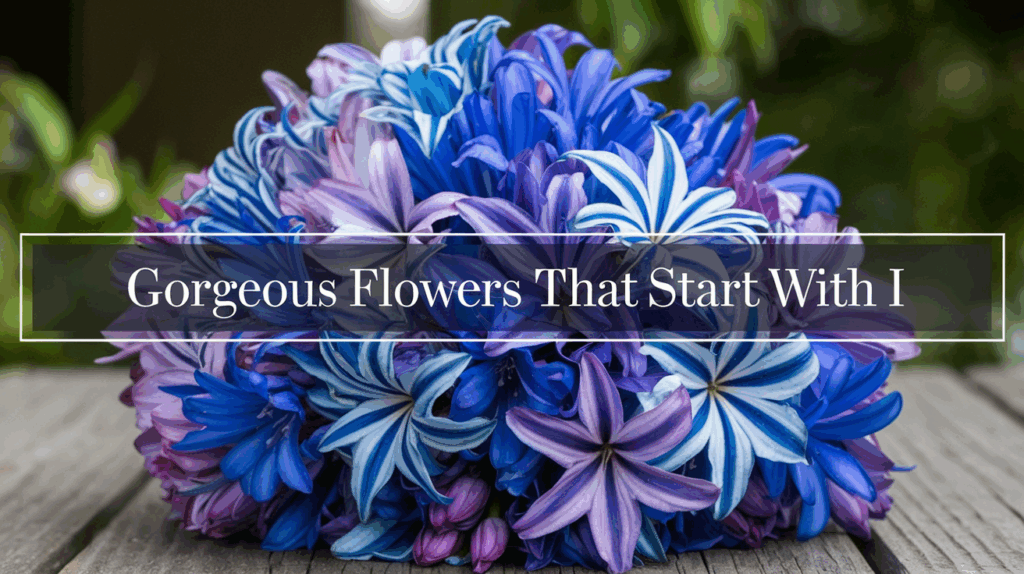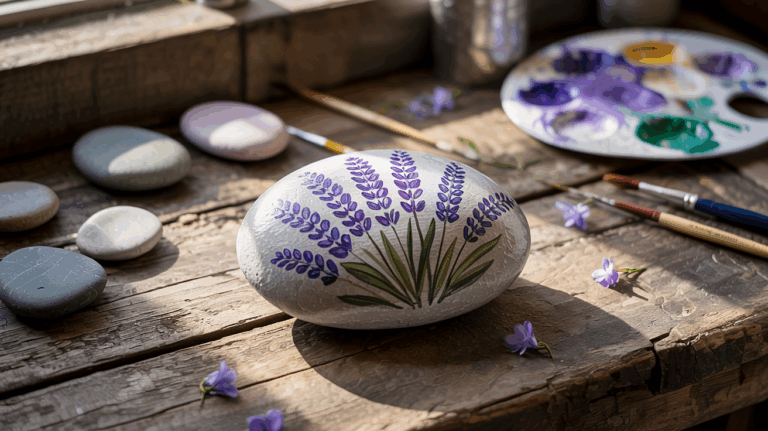Plant lovers often struggle to find new flora to add to their collections, especially when searching for specific alphabetical varieties.
Finding flowers that start with I can be particularly challenging since they’re less common in many garden centers and nurseries.
However, knowing these unique I-named flowers can help expand a garden’s beauty and diversity. This blog shows readers 47 gorgeous flowers that start with the letter I.
Each flower comes with descriptions of colors, growing conditions, and special qualities that make them stand out. The list includes both rare finds and more familiar blooms, so gardeners of all experience levels will find options that suit their spaces and climate zones.
How to Care for Flowers Starting with I
Caring for flowers that begin with the letter I requires understanding their specific needs and growing conditions. Most of these plants need regular attention to soil quality, watering schedules, and light exposure.
People who take the time to learn these basics will find their I-named flowers surviving throughout the growing season. The following tips can help gardeners maintain these beautiful blooms.
- Watering needs: Most I-named flowers prefer consistent moisture but not soggy soil. Gardens with Iris, Iberis, and Impatiens should be checked weekly for water needs, adjusting for rainfall and temperature changes.
- Light requirements: Many I-flowers enjoy full sun to partial shade. Ice plants need bright, direct sunlight for 6-8 hours daily, while Impatiens often perform better in shadier spots with filtered light.
- Soil conditions: The right soil makes a big difference for I-named blooms. Indian Pink prefers well-draining, slightly acidic soil, but Iceland Poppies grow best in neutral to slightly alkaline conditions with good drainage.
- Feeding schedule: A balanced fertilizer works well for most I-flowers during the growing season. Iris varieties benefit from a low-nitrogen formula applied in early spring and after blooming.
- Pruning techniques: Regular deadheading helps extend the bloom period of many I-flowers. Indian Hawthorn needs minimal pruning, while Iberis benefits from a light trim after its main flowering period ends.
- Pest management: Watch for common pests like aphids and spider mites on I-named flowers. Iberis rarely faces pest problems, but Impatiens can suffer from downy mildew in humid conditions.
- Winter care: Many I-flowers need protection during the cold months. Iris rhizomes should be mulched in colder regions, and Ice Plants might require winter protection in zones below USDA 6.
Unique Flowers that Start with I
Gardeners looking for unique additions to their flower beds might consider plants that begin with the letter I. These flowers offer a range of colors, sizes, and growing habits suitable for various garden settings and climate zones.
The following collection presents 47 beautiful options that can add interest and variety to any garden space.
1. Ice Plant
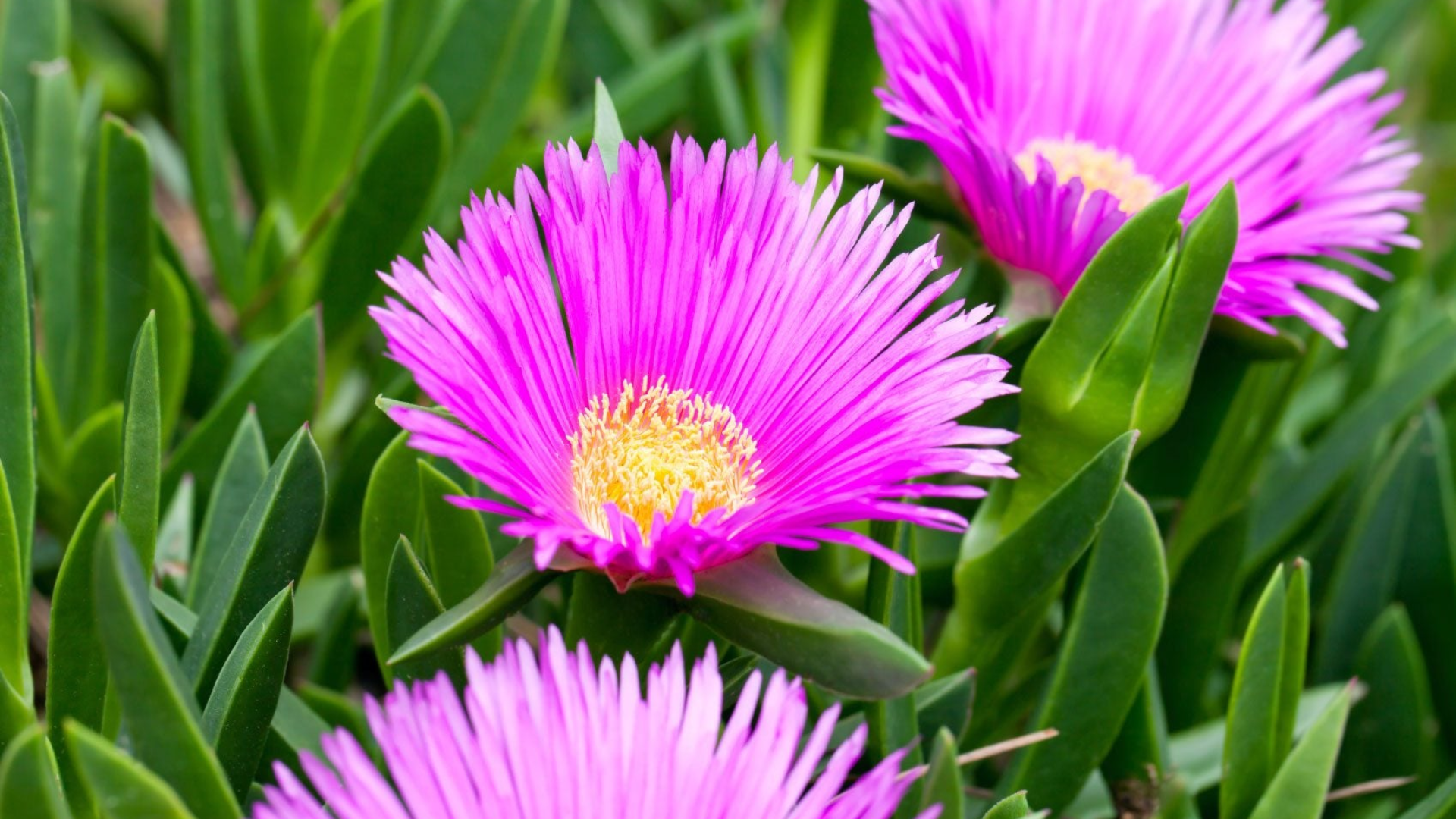
Ice Plant is a lively succulent known for its daisy-like flowers, which come in a variety of colors, including pink, red, and purple. It’s particularly popular for ground covers due to its low-growing nature and resistance to dry conditions.
Native to South Africa, it flourishs in hot, sunny climates. Ice Plant’s unique name comes from the sparkling appearance of its petals, which resemble ice crystals under sunlight.
| Scientific Name | Delosperma cooperi |
|---|---|
| Commonly Found Region | South Africa |
| Blooming Period | Summer to Fall |
| Symbolism | Endurance, Beauty |
| Benefits | Erosion control, Low maintenance |
How to Plant:
- Plant in well-drained soil
- Full sun exposure
- Water moderately
Fun Fact: Ice Plant is highly drought-tolerant, making it ideal for xeriscaping.
2. Impatiens

Impatiens are known for their bright, colorful blooms and are a popular choice for shaded areas in gardens. They come in a wide range of colors, including pink, purple, red, and white.
Native to tropical and subtropical regions, they flourish in environments with indirect sunlight and moist soil. Impatiens are often used to add lively splashes of color to hanging baskets and flower beds.
| Scientific Name | Impatiens walleriana |
|---|---|
| Commonly Found Region | Africa, Asia |
| Blooming Period | Spring to Fall |
| Symbolism | Motherhood, Touch-me-not |
| Benefits | Attracts butterflies, Non-invasive |
How to Plant:
- Plant in shaded areas
- Keep soil moist
- Avoid direct sunlight
Fun Fact: Impatiens are also known as “Busy Lizzies” due to their fast-growing nature.
3. Iris
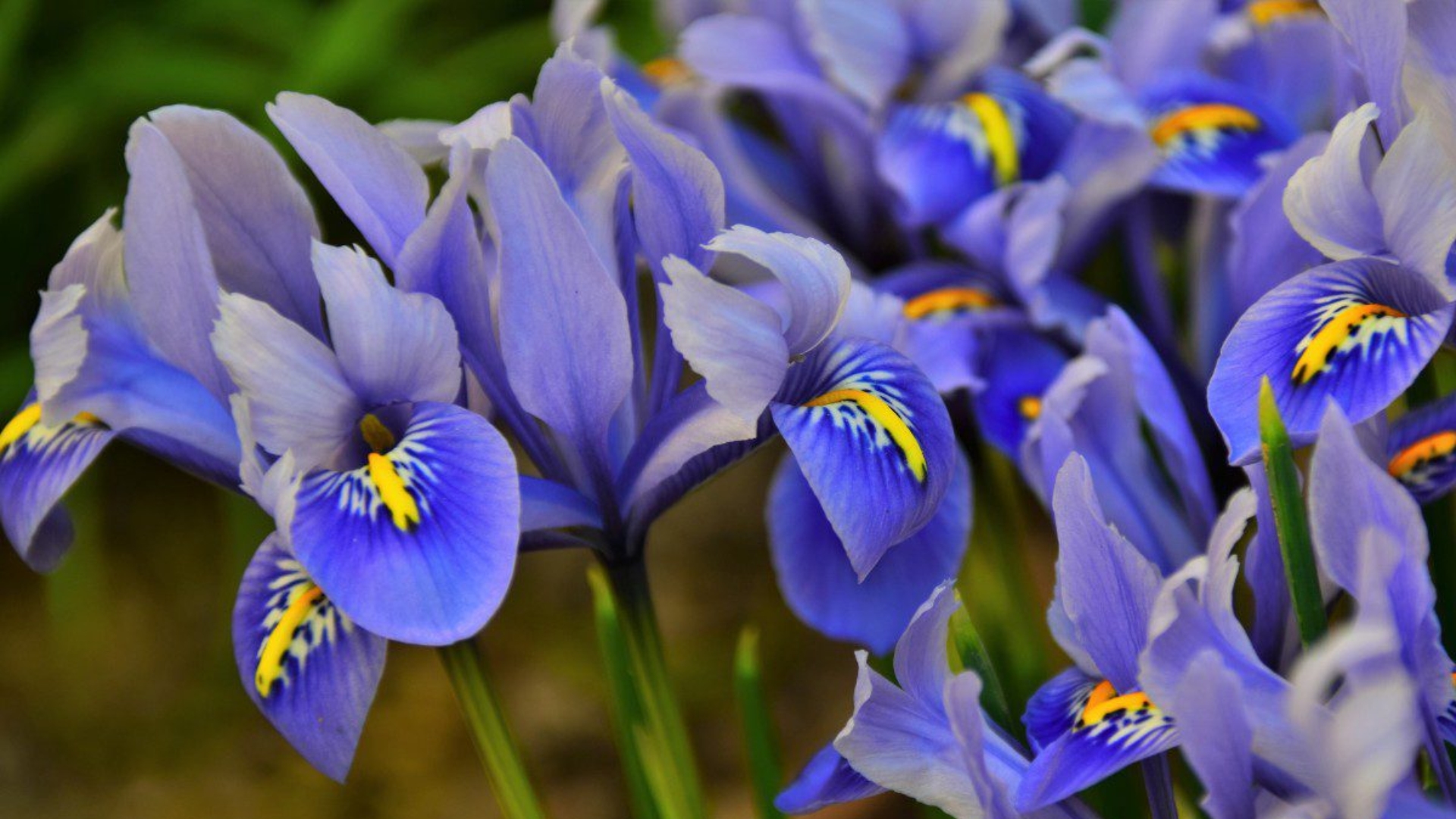
Iris flowers are classic blooms known for their intricate, bearded petals and lively colors. Named after the Greek goddess of the rainbow, their flowers come in various hues, from purple to yellow, and even bi-colored varieties.
They grow well in moist, well-drained soil and are often used in ornamental gardens. The unique shape of the iris flower, combined with its rich symbolism, makes it a favorite among gardeners.
| Scientific Name | Iris germanica |
|---|---|
| Commonly Found Region | Europe, North America |
| Blooming Period | Spring |
| Symbolism | Wisdom, Courage |
| Benefits | Attracts pollinators, Beautiful in gardens |
How to Plant:
- Plant in full sun
- Ensure well-drained soil
- Water regularly
Fun Fact: The iris flower has been used as a symbol of France for centuries.
4. Indian Blanket Flower
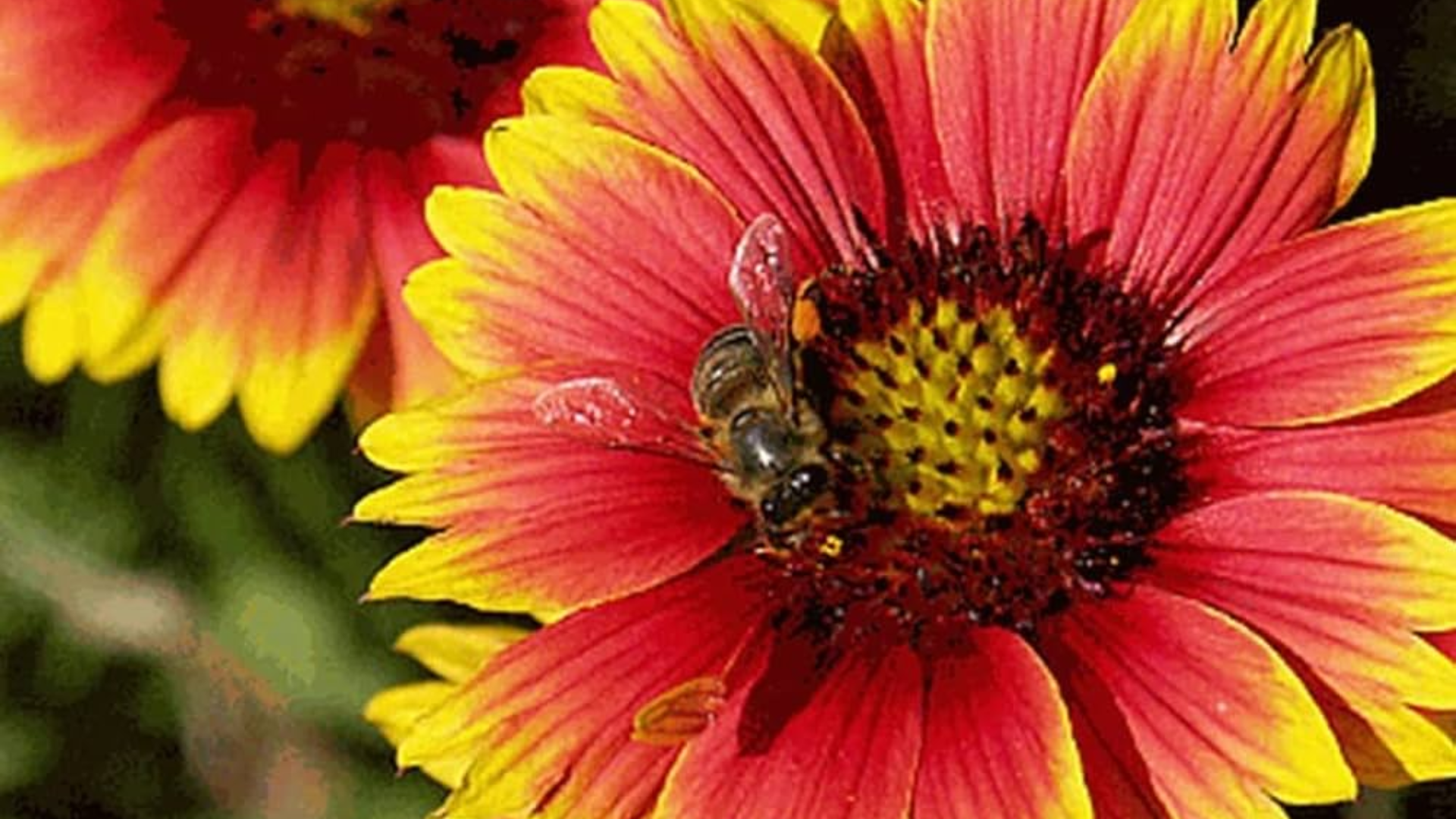
Indian Blanket Flower is a bright, daisy-like flower known for its fiery red and yellow petals. Native to the United States, it flourishes in wild meadows and prairies, blooming from spring to summer.
The plant is hardy and drought-tolerant, making it perfect for low-maintenance landscapes. Its cheerful appearance and resilience make it a favorite among gardeners.
| Scientific Name | Gaillardia pulchella |
|---|---|
| Commonly Found Region | North America |
| Blooming Period | Spring to Summer |
| Symbolism | Joy, Warmth |
| Benefits | Drought-resistant, Attracts pollinators |
How to Plant:
- Plant in well-drained soil
- Full sun exposure
- Water sparingly
Fun Fact: The Indian Blanket Flower is the state flower of Oklahoma.
5. Indian Cress
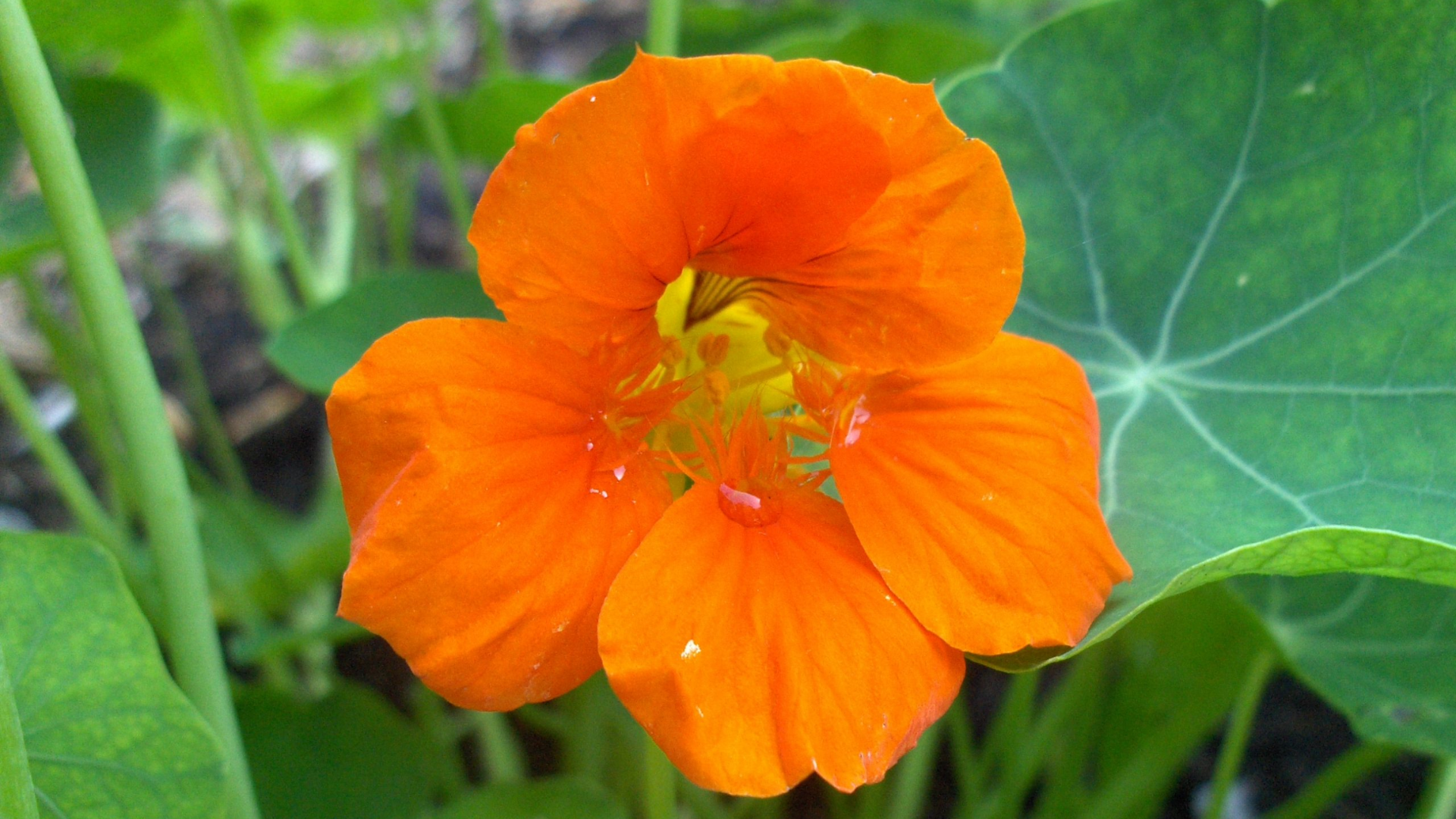
Indian Cress, also known as Nasturtium, is a flowering plant celebrated for its lively, edible blooms. The flowers, typically orange, red, or yellow, have a spicy taste and are often used in salads.
Native to South America, it flourishs in well-drained, nutrient-rich soil. Indian Cress is also known for its ability to repel certain pests, making it a useful companion plant in gardens.
| Scientific Name | Tropaeolum majus |
|---|---|
| Commonly Found Region | South America |
| Blooming Period | Summer to Fall |
| Symbolism | Patriotism, Victory |
| Benefits | Edible flowers, Pest repellent |
How to Plant:
- Plant in full sun
- Well-drained soil
- Regular watering
Fun Fact: The leaves of Indian Cress are also edible and taste like pepper.
6. Indian Lotus
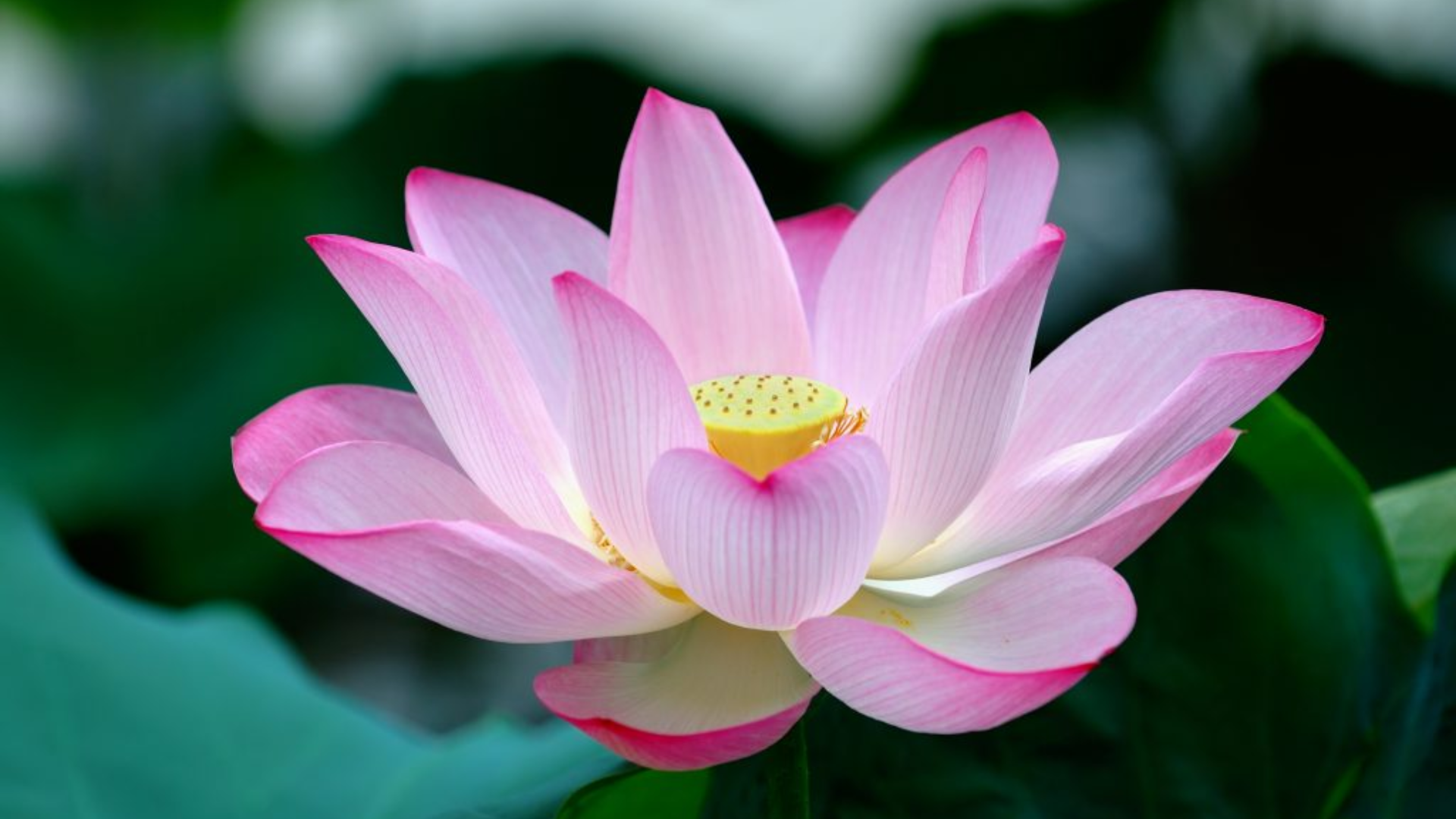
The Indian Lotus, also known as the Sacred Lotus, is a symbol of purity and beauty in many cultures. This water-loving flower features large, fragrant blooms that come in shades of pink and white.
Native to Asia, it grows in calm ponds or shallow waters, where its blossoms rise above the surface. The Indian Lotus is also known for its spiritual significance, particularly in Hinduism and Buddhism.
| Scientific Name | Nelumbo nucifera |
|---|---|
| Commonly Found Region | Asia, Africa |
| Blooming Period | Summer |
| Symbolism | Purity, Enlightenment |
| Benefits | Edible seeds, Medicinal properties |
How to Plant:
- Plant in water gardens
- Ensure full sun
- Regular watering
Fun Fact: The seeds of the Indian Lotus can remain viable for thousands of years.
7. Indian Paintbrush

Indian Paintbrush is a striking wildflower known for its bright red or orange tubular flowers that resemble paintbrush strokes. Native to North America, it blooms in meadows and open woodlands during the spring and summer.
It flourishes in well-drained soil and is often found in regions with plenty of sunlight. Its unique color and texture make it a favorite for naturalistic garden designs.
| Scientific Name | Castilleja indivisa |
|---|---|
| Commonly Found Region | North America |
| Blooming Period | Spring to Summer |
| Symbolism | Strength, Passion |
| Benefits | Attracts pollinators, Hardy in drought conditions |
How to Plant:
- Plant in full sun
- Well-drained soil
- Minimal watering
Fun Fact: Indian Paintbrush is a semi-parasitic plant that attaches to the roots of other plants for nutrients.
8. Indian Pipe
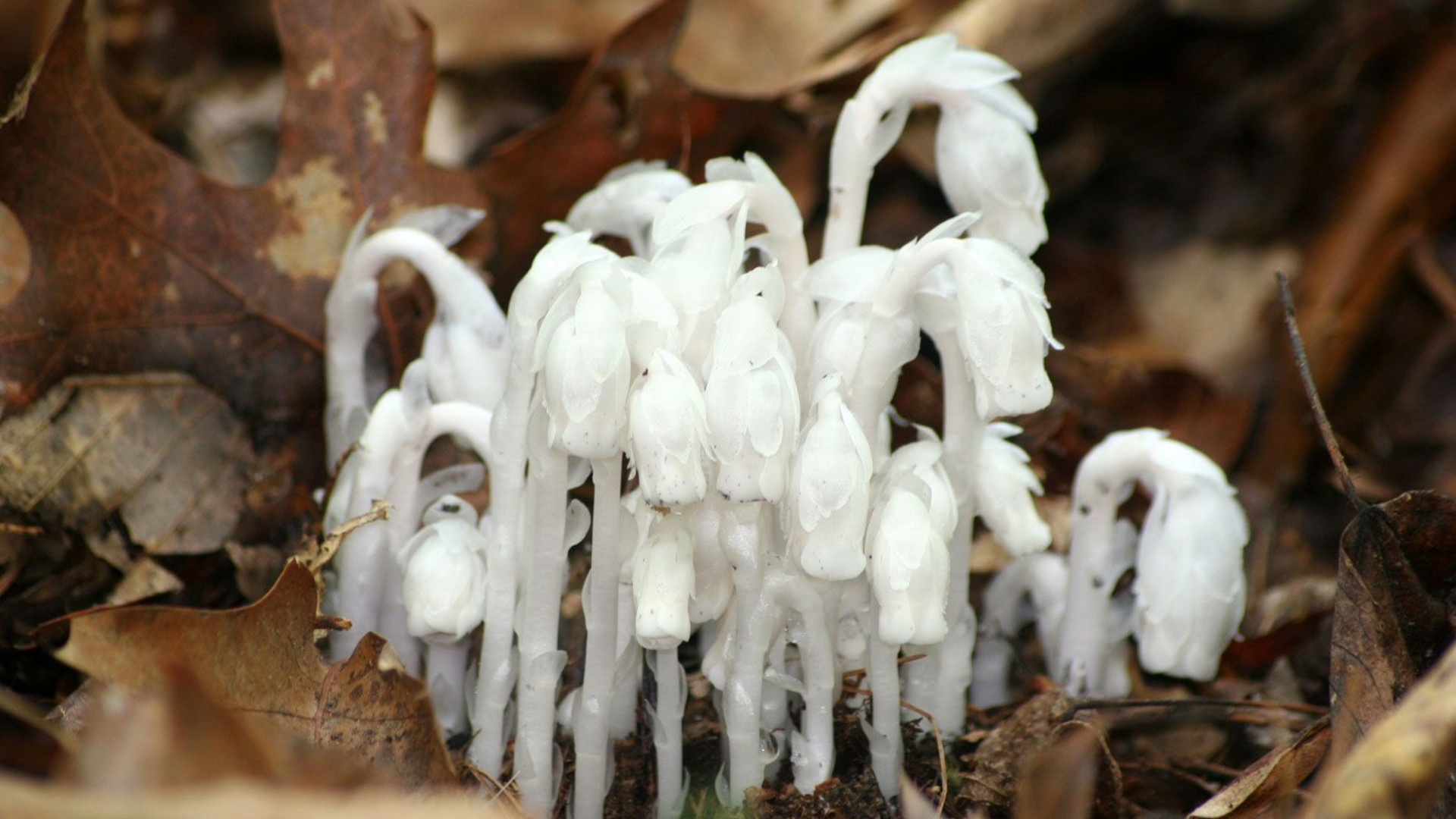
Indian Pipe is an intriguing flower known for its waxy, translucent white appearance, resembling a pipe or funnel. Unlike most plants, it does not rely on photosynthesis but instead obtains nutrients by parasitizing fungi.
This unique plant flourishes in shaded forests and is often found in areas with rich, damp soil. Indian Pipe is a symbol of mystery and the unseen forces of nature.
| Scientific Name | Monotropa uniflora |
|---|---|
| Commonly Found Region | North America, Asia |
| Blooming Period | Summer |
| Symbolism | Mystery, Evolution |
| Benefits | Medicinal properties (traditional uses) |
How to Plant:
- Plant in shaded forests
- Rich, moist soil
- Low light exposure
Fun Fact: Indian Pipe is sometimes called “Ghost Plant” because of its ghostly appearance.
9. Ixia
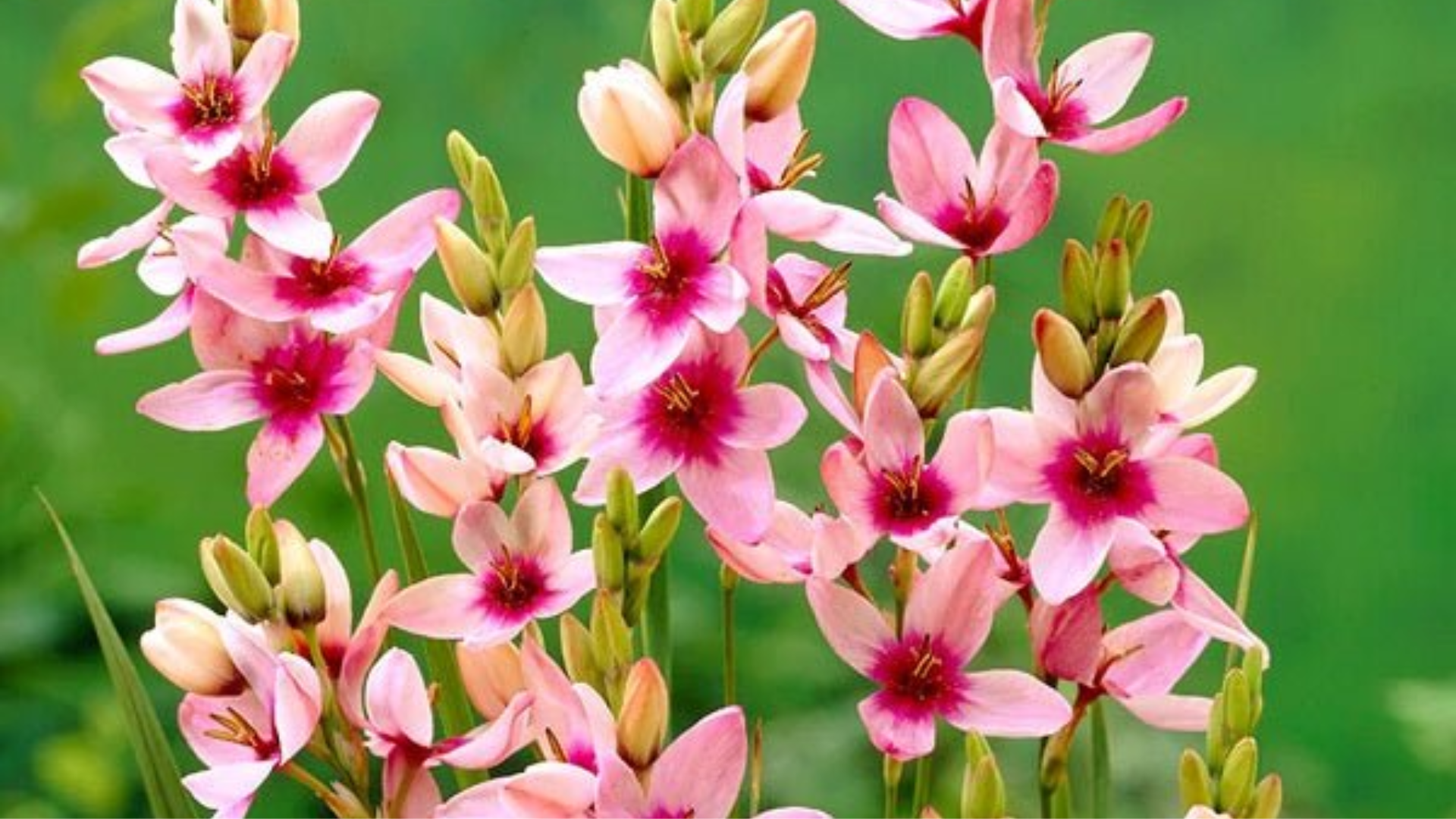
Ixia, often called “Corn Lily,” is known for its star-shaped flowers that come in a variety of colors, including white, pink, purple, and red. Native to South Africa, it blooms in the summer and flourishs in full sun with well-drained soil.
The plant is perfect for adding a touch of grace to garden borders and flower beds. Its striking appearance and long-lasting flowers make it a favorite among gardeners.
| Scientific Name | Ixia paniculata |
|---|---|
| Commonly Found Region | South Africa |
| Blooming Period | Summer |
| Symbolism | Strength, Resilience |
| Benefits | Attractive to pollinators, Low-maintenance |
How to Plant:
- Plant in full sun
- Well-drained soil
- Water moderately
Fun Fact: Ixia flowers are often used in floral arrangements due to their long-lasting blooms.
10. Ipomoea
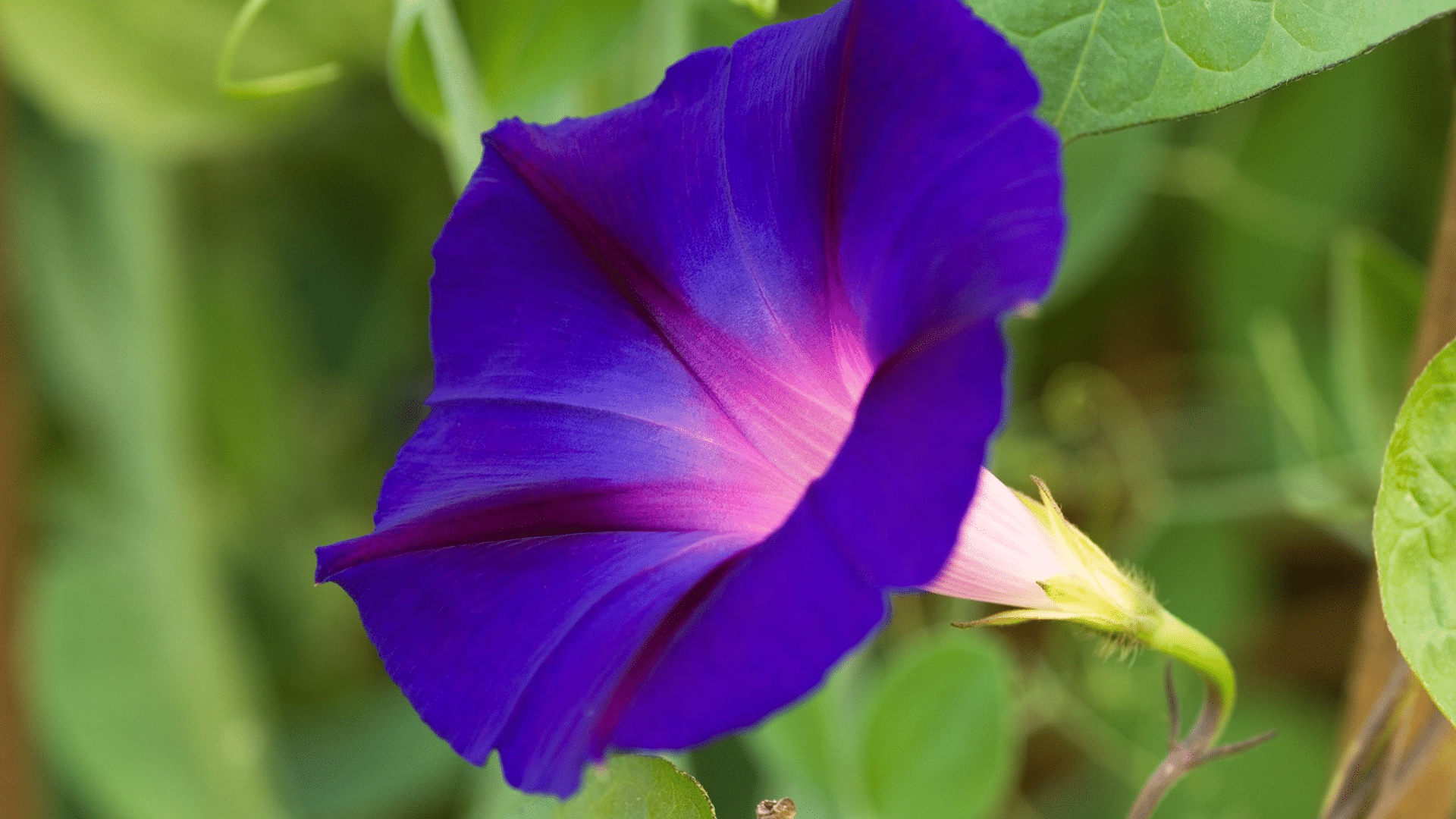
Ipomoea is a genus of plants that includes some of the most well-known flowering vines, such as the Morning Glory. These flowers bloom in the early morning, featuring lively colors such as purple, blue, and pink.
Native to tropical and subtropical regions, Ipomoea is commonly used as an ornamental vine, often seen climbing trellises and fences. The plant’s beauty and rapid growth make it a popular choice for creating vertical interest in gardens.
| Scientific Name | Ipomoea purpurea |
|---|---|
| Commonly Found Region | Tropical and subtropical regions |
| Blooming Period | Summer to Fall |
| Symbolism | Love, Affection |
| Benefits | Groundcover, Attracts butterflies |
How to Plant:
- Plant in full sun
- Well-drained soil
- Water regularly
Fun Fact: Ipomoea flowers are often referred to as “Morning Glories” because they bloom at dawn.
11. Ivory Coast Lily
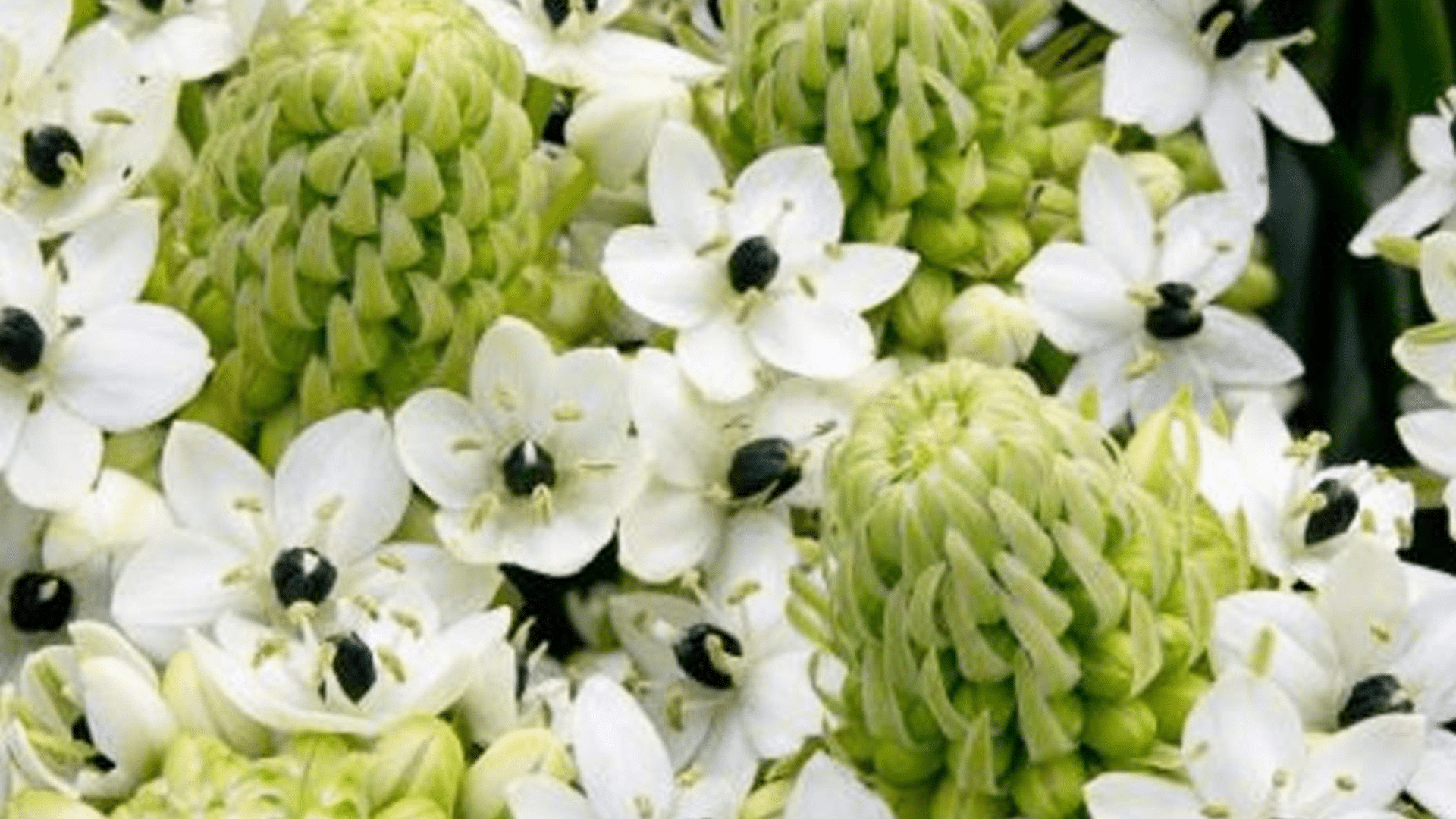
The Ivory Coast Lily is an exotic, trumpet-shaped flower that produces large, fragrant blooms in shades of white and cream. Native to West Africa, it flourishs in humid environments and well-drained soil.
This lily’s bold appearance and captivating fragrance make it a favorite for both gardens and floral arrangements. It blooms in the late spring and early summer, adding grace to any garden space.
| Scientific Name | Crinum asiaticum |
|---|---|
| Commonly Found Region | West Africa |
| Blooming Period | Late Spring to Early Summer |
| Symbolism | Purity, Beauty |
| Benefits | Ornamental use, Fragrant flowers |
How to Plant:
- Plant in full sun
- Well-drained soil
- Water moderately
Fun Fact: The Ivory Coast Lily’s large, fragrant flowers attract bees and other pollinators.
12. Icelandic Poppy
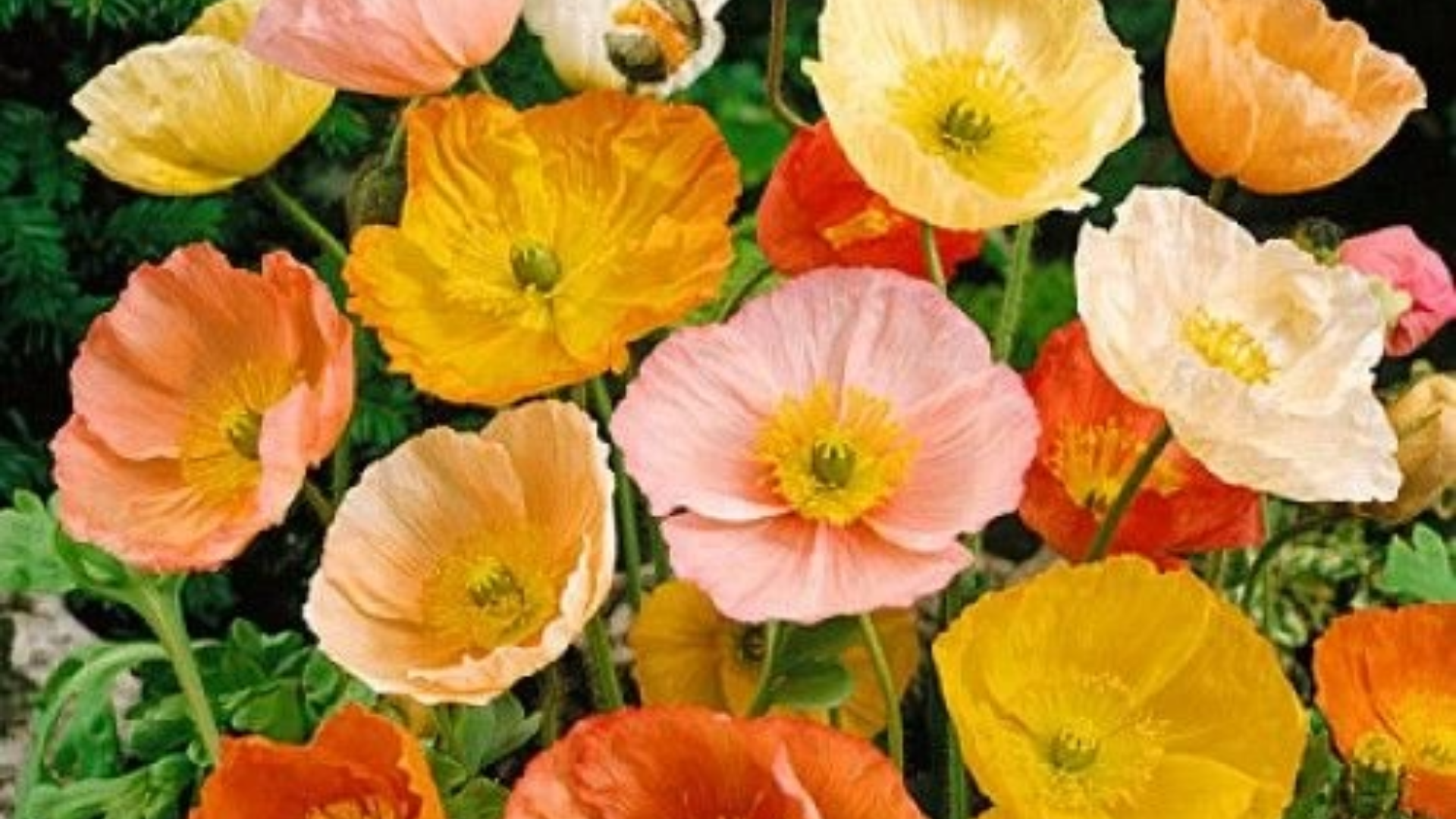
The Icelandic Poppy is a hardy flower that flourishs in cool climates, often found blooming in late spring to early summer. Known for its delicate, papery petals, the flower comes in shades of white, orange, and red.
It adds a bright and cheerful touch to gardens, often grown in meadows or as a border plant. This flower is particularly well-suited for colder climates and can flourish in poor soil.
| Scientific Name | Papaver nudicaule |
|---|---|
| Commonly Found Region | Iceland, North America |
| Blooming Period | Late Spring to Early Summer |
| Symbolism | Peace, Sleep |
| Benefits | Hardy in cold climates, Low maintenance |
How to Plant:
- Plant in well-drained soil
- Prefers full sun
- Water lightly
Fun Fact: Icelandic Poppies are known for their ability to withstand frost, making them ideal for northern gardens.
13. Indigo Flower
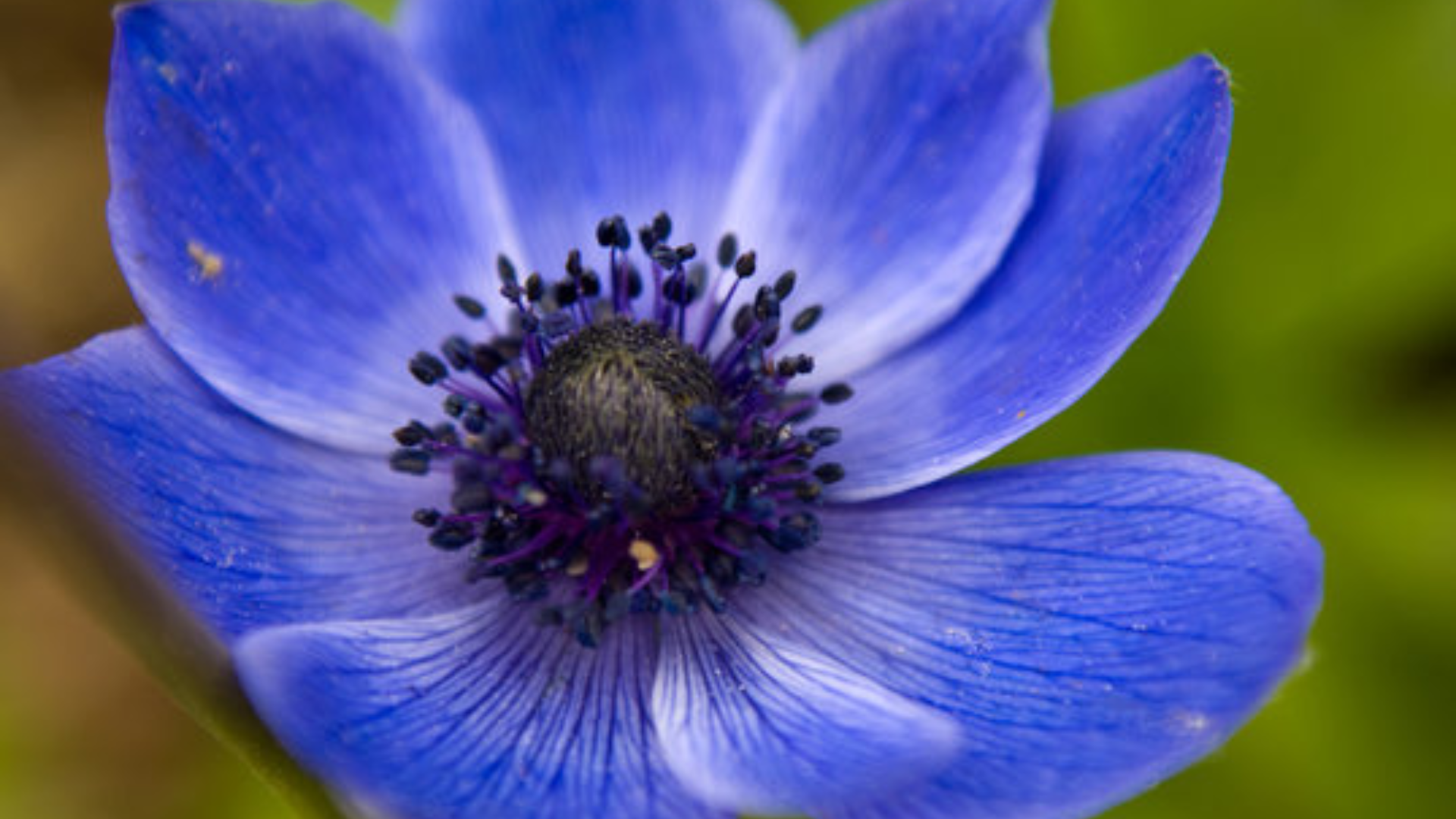
The Indigo Flower, part of the Fabaceae family, is famous for its striking blue color, which resembles the deep hues of indigo dye. The plant grows as a vine or shrub and is often used in landscaping to cover fences and walls.
It prefers full sunlight and well-drained soil, blooming in late spring to early summer. The Indigo Flower’s rich color and unique form make it a beautiful addition to any garden.
| Scientific Name | Indigofera tinctoria |
|---|---|
| Commonly Found Region | Asia, Africa |
| Blooming Period | Late Spring to Early Summer |
| Symbolism | Wisdom, Truth |
| Benefits | Attracts pollinators, Can be used for natural dye |
How to Plant:
- Plant in full sun
- Well-drained soil
- Water regularly
Fun Fact: Indigo Flower’s name comes from its historical use in making indigo dye.
14. Inca Lily

The Inca Lily, also known as Alstroemeria, is a beautiful flower native to South America. It features lively colors like orange, pink, and yellow, with streaked or speckled petals.
Often grown as a cut flower, the Inca Lily adds a burst of color to floral arrangements. It blooms in late spring through summer and flourishs in well-drained soil with plenty of sunlight.
| Scientific Name | Alstroemeria aurea |
|---|---|
| Commonly Found Region | South America |
| Blooming Period | Late Spring to Summer |
| Symbolism | Friendship, Mutual support |
| Benefits | Long-lasting cut flowers, Low maintenance |
How to Plant:
- Plant in full sun
- Well-drained, fertile soil
- Water regularly
Fun Fact: The Inca Lily is named after the Inca civilization due to its lively colors and beauty.
15. Isotoma
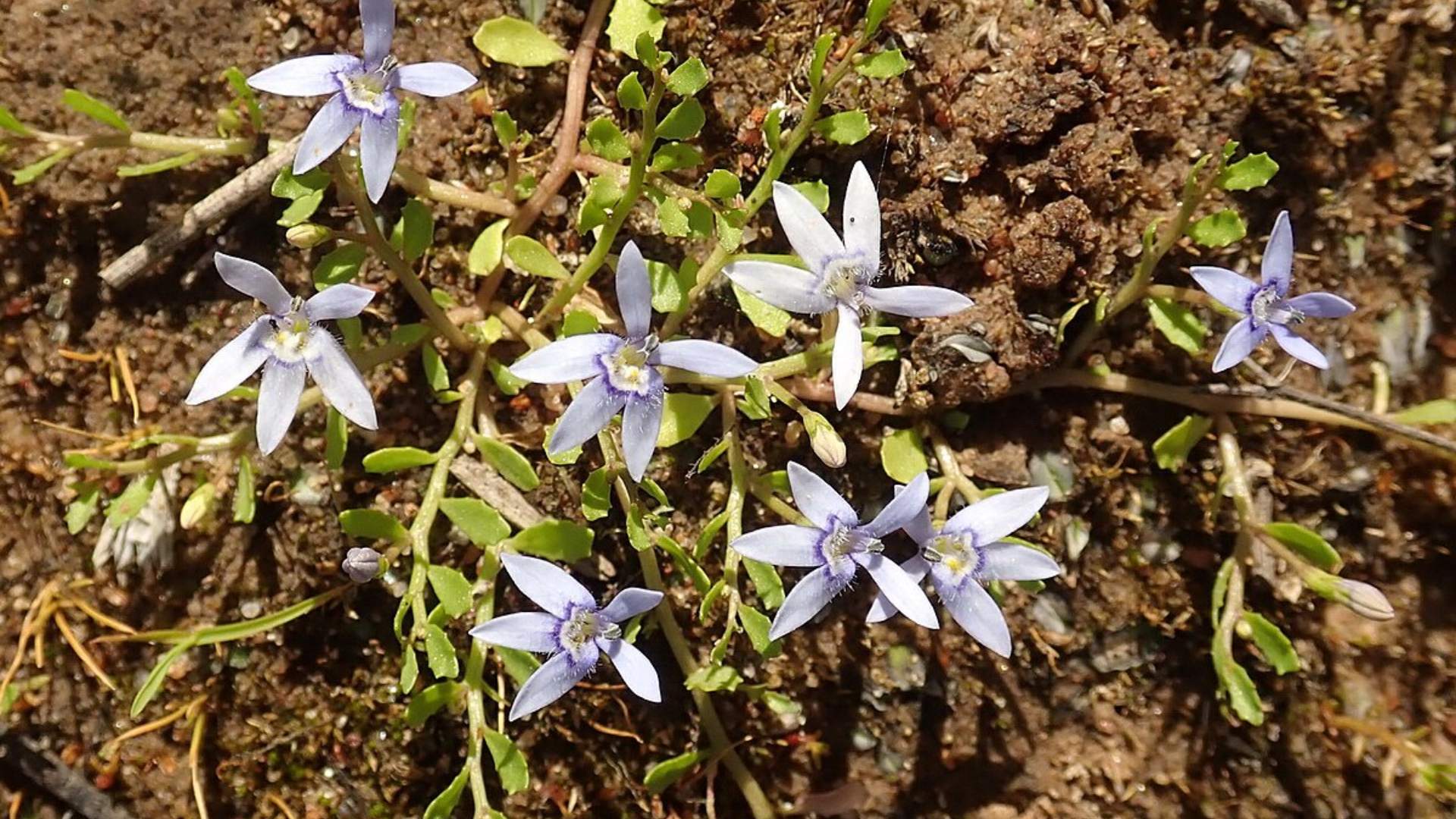
Isotoma, also known as Blue Star Creeper, is a low-growing ground cover plant that produces delicate blue star-shaped flowers. It flourishs in moist, well-drained soil and is often used as a ground cover or in hanging baskets.
Native to Australia, it blooms during the spring and summer months. Its compact growth habit and lively color make it an ideal choice for both garden beds and containers.
| Scientific Name | Isotoma fluviatilis |
|---|---|
| Commonly Found Region | Australia |
| Blooming Period | Spring to Summer |
| Symbolism | Balance, Peace |
| Benefits | Low maintenance, Ideal for ground cover |
How to Plant:
- Plant in full sun to partial shade
- Well-drained soil
- Water regularly
Fun Fact: Isotoma is often used in rock gardens due to its spreading habit and lively blue flowers.
16. Ivory Tower Clematis

The Ivory Tower Clematis is a remarkable climbing plant known for its white, bell-shaped flowers that bloom in late spring and early summer. Native to East Asia, it flourishes in well-drained, slightly acidic soil.
The plant is perfect for growing on trellises, fences, or walls, providing a classic look to any garden. Its fragrant blooms attract pollinators and add a vertical element to landscapes.
| Scientific Name | Clematis virginiana |
|---|---|
| Commonly Found Region | East Asia |
| Blooming Period | Late Spring to Early Summer |
| Symbolism | Mental strength, Beauty |
| Benefits | Attractive to pollinators, Ideal for vertical gardens |
How to Plant:
- Plant in full sun or partial shade
- Well-drained, slightly acidic soil
- Regular watering
Fun Fact: Clematis is often referred to as the “queen of climbers” due to its rapid growth and remarkable blooms.
17. Imperial Moth Orchid
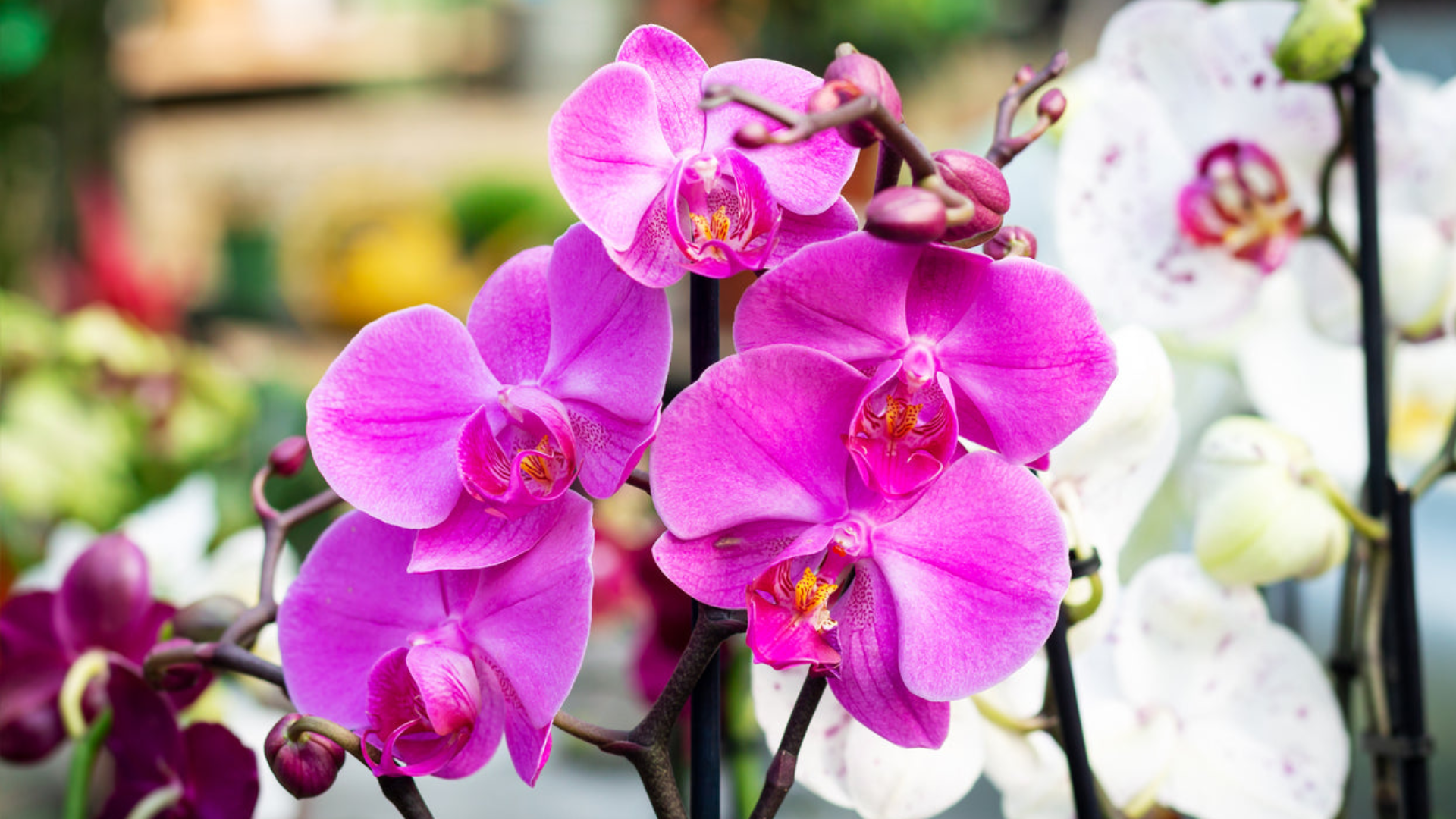
The Imperial Moth Orchid is an exotic flower known for its large, delicate blooms that range in color from white to light purple. It is native to Southeast Asia and requires a humid, tropical climate to flourish.
This flower is often found in tropical greenhouses or as a houseplant in cooler climates. Its fragrant, intricate flowers make it a favorite among orchid enthusiasts and collectors.
| Scientific Name | Phalaenopsis amabilis |
|---|---|
| Commonly Found Region | Southeast Asia |
| Blooming Period | Winter to Spring |
| Symbolism | Love, Beauty |
| Benefits | Air-purifying, Aesthetic appeal |
How to Plant:
- Plant in a humid environment
- Well-drained, orchid-specific soil
- Water regularly, keeping soil moist
Fun Fact: The Imperial Moth Orchid is one of the most commonly grown orchids worldwide due to its beauty and ease of care.
18. Island Foxglove

Island Foxglove is a striking flower that grows tall with tubular, bell-shaped flowers in shades of pink, purple, and white. It is native to the Channel Islands off the coast of California.
Foxglove blooms in the summer, adding height and drama to gardens. This plant flourishs in well-drained soil and is often seen in cottage-style gardens or as a backdrop to shorter plants.
| Scientific Name | Digitalis islandica |
|---|---|
| Commonly Found Region | Channel Islands (California) |
| Blooming Period | Summer |
| Symbolism | Strength, Healing |
| Benefits | Attracts pollinators, Ornamental use |
How to Plant:
- Plant in full sun to partial shade
- Well-drained, slightly acidic soil
- Water regularly, but avoid waterlogging
Fun Fact: Island Foxglove can reach up to 3 feet tall, making it a striking feature in gardens.
19. Incarvillea (Hardy Gloxinia)
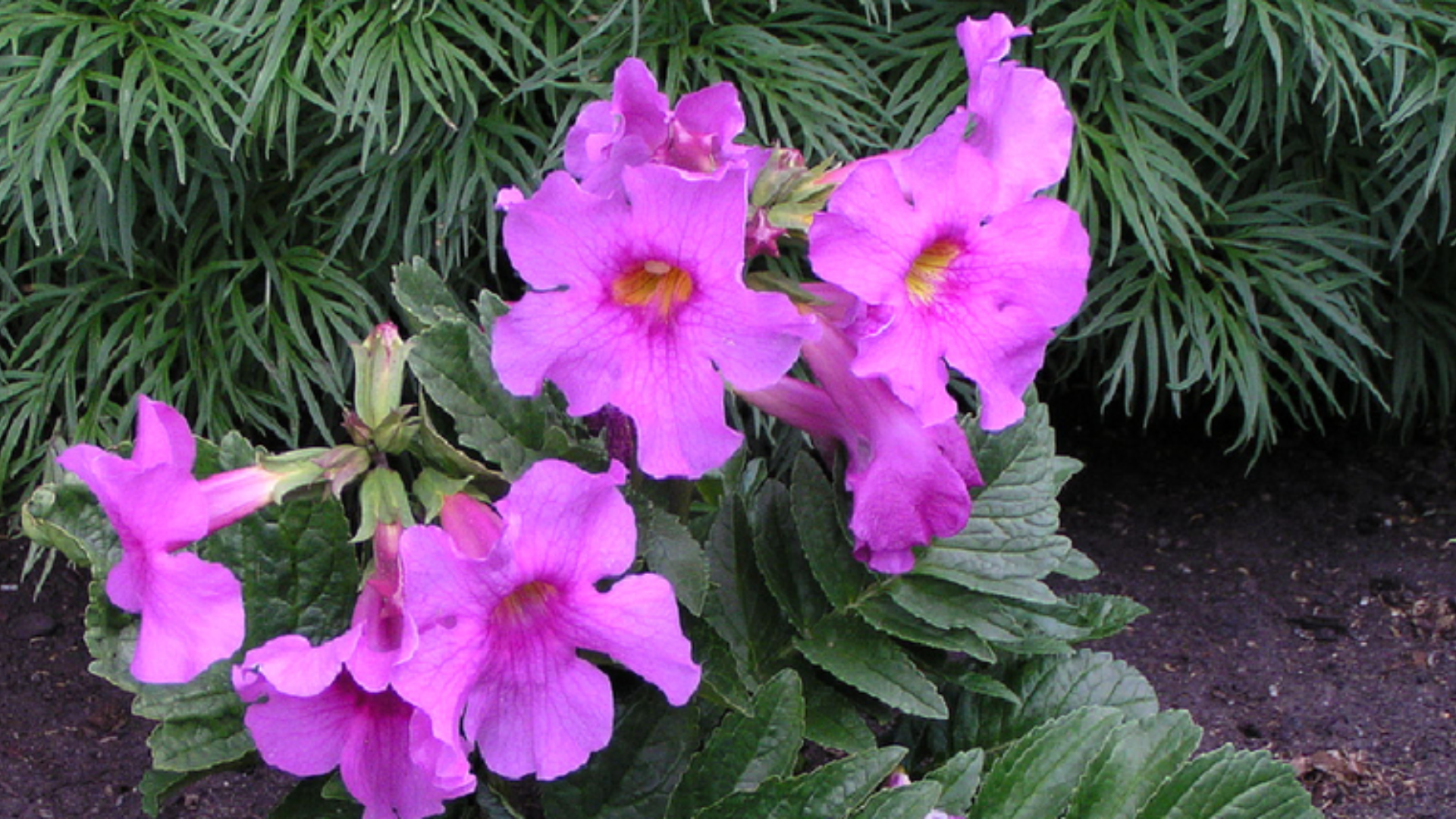
Incarvillea, also known as Hardy Gloxinia, is a remarkable perennial that blooms with large, funnel-shaped flowers in shades of pink, purple, and white. Native to Asia, it flourishs in well-drained soil and prefers areas with full sunlight.
The plant grows to about 2 feet tall and adds a splash of color to gardens during the spring and summer months. It is prized for its beauty and resilience in various climates, from temperate to mild regions.
| Scientific Name | Incarvillea delavayi |
|---|---|
| Commonly Found Region | Asia |
| Blooming Period | Spring to Summer |
| Symbolism | Patience, Beauty |
| Benefits | Attracts pollinators, Hardy in a variety of climates |
How to Plant:
- Plant in full sun
- Well-drained, fertile soil
- Water moderately, allowing soil to dry between waterings
Fun Fact: Incarvillea is often called Hardy Gloxinia due to its resemblance to the tropical Gloxinia, but it is much more tolerant of cooler temperatures.
20. Italian Aster
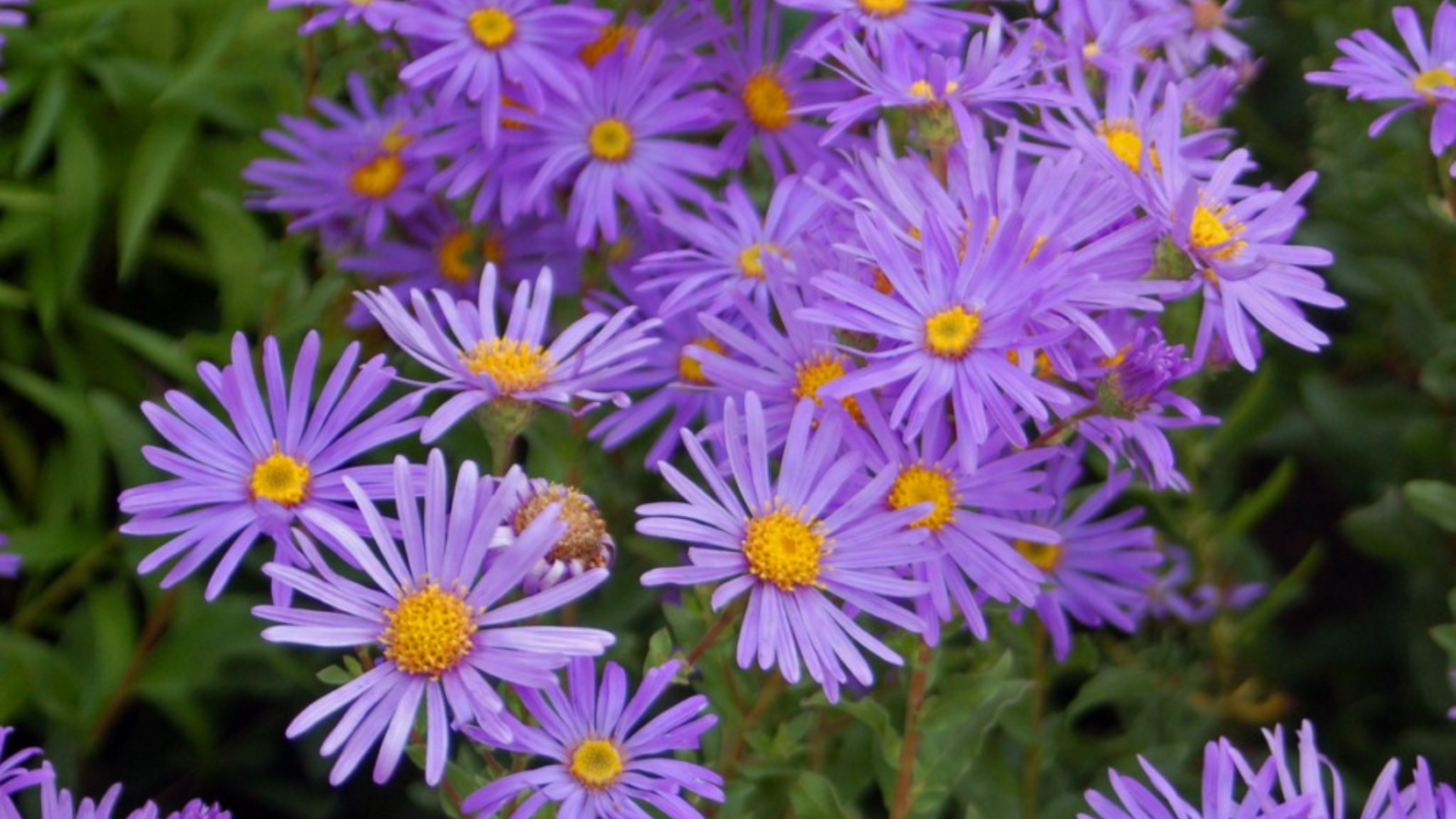
Italian Aster, also known as the Michaelmas Daisy, is a lively flower that adds rich hues of purple, blue, or pink to gardens. Native to Europe, it blooms in late summer to fall, making it a perfect addition to gardens that need color during the cooler months.
This perennial flourishes in full sun and well-drained soil, growing to a height of up to 3 feet. It is a favorite of pollinators like bees and butterflies.
| Scientific Name | Aster amellus |
|---|---|
| Commonly Found Region | Europe |
| Blooming Period | Late Summer to Fall |
| Symbolism | Patience, grace |
| Benefits | Attracts pollinators, Low-maintenance |
How to Plant:
- Plant in full sun
- Well-drained soil
- Water regularly
Fun Fact: The Italian Aster is named after the ancient Greek word for “star,” due to its star-shaped flowers.
Other Flowers That Start with I You Didn’t Know About
21. Inca Sunflower
22. Irises of the Alps
23. Israeli Rattlesnake Master
24. Indian Rhubarb
25. Island Bellflower
26. Ivies (English Ivy, etc.)
27. Inula
28. Ipomoea Aquatica (Water Spinach)
29. Inca Marigold
30. Insectivorous Plant
31. Ivory Coast Cactus
32. Ilex (Holly)
33. Indian Summer Chrysanthemum
34. Indian Thistle
35. Iodine Bush
36. Imperial Violet
37. Iriodendron
38. Icefield Orchids
39. Indigo Bunting Flower
40. Indian Pea
41. Ivory Bell Orchid
42. Indian Water Lily
43. Ixia Lily
44. Italian Poppy
45. Indian Strawberry
46. Indian Cow Parsnip
47. Ivory-leafed Lilac
The Bottom Line
The world of flowers that start with I offers gardeners an interesting collection of blooms from the exotic Ixora to the familiar Iris. These plants bring unique shapes, colors, and growing habits to gardens everywhere.
Knowing how to care for these special varieties ensures they flourish and display their full beauty throughout their growing seasons.
While some require specific conditions, others adapt easily to various environments, making them accessible to both beginner and experienced plant enthusiasts.
The variety among these flowers means gardeners can find options for every climate, soil type, and garden style.
By incorporating several of these I-named blooms into garden spaces, people create diversity and visual interest that changes with the seasons and brings joy year after year.

